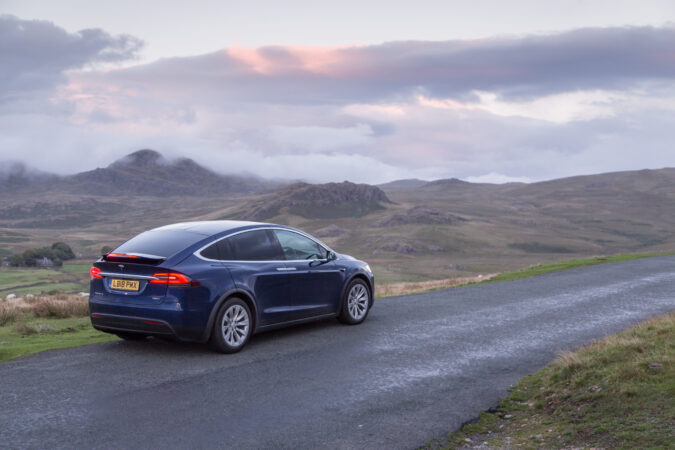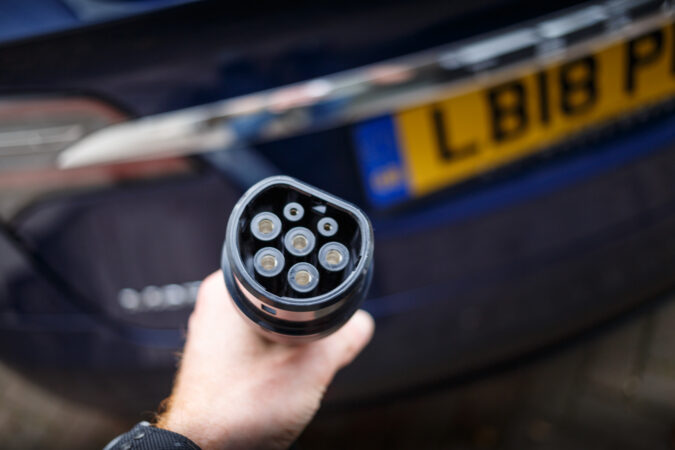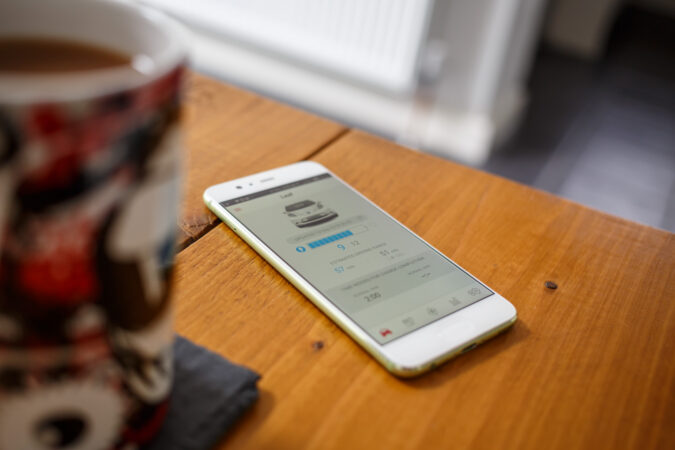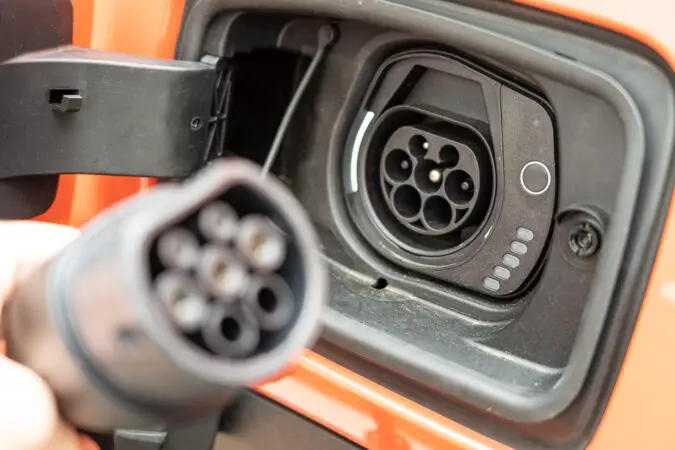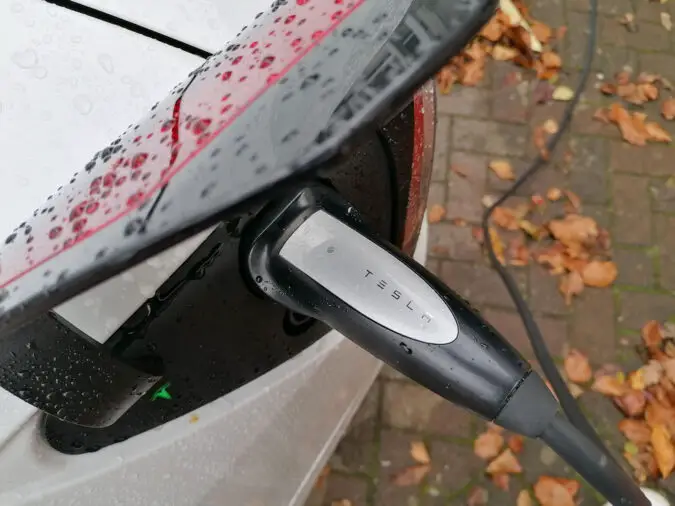One big advantage of using an electric car is that you can charge it at home or at a dedicated EV charging station. Unlike gasoline-fueled vehicles, electric cars spare you economic and environmental concerns. Charging from a home electrical outlet is one thing, but you might get rightfully confused when you see that huge EV charging station in the middle of a suburban parking lot. Free fuel or electricity is always welcome. Your days of looking for free EV charging stations near me without luck are over! Know how to do it the right way.
We have the answers to all your EV charging station-related questions as well as a conclusive guide on “EV charging stations near me.” Granted, the infrastructure for EVs is quite different in comparison to gas cars. However, with a bit of practice, you will soon be ushered into an era of electrification. Once you know how the basics work, charging electric cars is easy peasy!
- Types Of Electric Cars
- 5 Ways To Find Free EV Charging Stations
- How Long Does It Take To Charge?
- Are Our EV Charging Stations Free?
- Use An EV Car Charging Station
- Install A Home EV Car Charging Station
- FAQs
Types Of Electric Cars
Electric cars come in a few different types. Some operate solely on electricity and they are termed pure electric vehicles. Others can be run on diesel or gasoline too and thus, appropriately named hybrid electric vehicles.
- Plug-in electric: A plug-in electric car runs entirely on electricity and derives all its power from an electric charge. This kind does not need diesel or gasoline to operate so they do not generate emissions like conventional cars.
- Plug-in hybrid: In addition to their environmentally-friendly electric operation, plug-in hybrids can run on diesel or gasoline too if they are sparing on charge. These vehicles will produce emissions when running on fuel but will not do that when they are operating on electricity. You can plug plug-in hybrids into a charging station to recharge them.
- Hybrid-electric: Last but not the least, hybrid-electricity cars run primarily on fuel such as diesel or gasoline, but also feature an electric battery. The battery is recharged via regenerative braking. The result? Drivers can switch between the “EV” mode and the fuel mode with the touch of a button. You cannot plug these vehicles into an electricity source because they rely on diesel or gasoline for energy.
5 Ways To Find Free EV Charging Stations Near Me
Unfortunately, we do not live in a utopian society, so there is no free lunch. But, complimentary EV stations come pretty close. As electricity is priced less than gasoline, there is an abundance of opportunities and places for those who cleverly invested in electric cars.
These are a few answers to “how to find free EV charging stations near me?”:
- Manufacturer Benefits
- Advertisement-Supported Electrons
- Dealership Charging
- Ask the App
- Special Day Bonus
Let’s take a closer look at each one to learn more about them and how you can avail their generous offering:
Manufacturer Benefits: Free EV Charging
Perhaps complimentary EV charging was initiated by Tesla in their days of trying to make a mark in the automotive industry. The brand found a unique way to tempt new customers to the all-electric zone. Thanks to unlimited access to the convenient and rapidly expanding world of Supercharging, thousands of people who were offset by the high prices of tesla realized that the car would soon “pay for itself” with “free” fuel.
At the same time, BMW and Nissan introduced “No Charge to Charge,” a program for the users of their electric cars. A bit slower than the Supercharger network from Tesla, these charging stations made up for their lower prices.
Nowadays, most car makers have launched at least one type of EV charging offering, starting from enough energy needed to do a road trip to a lifetime of unlimited charging.
Potential buyers of all-electric cars from Kia, Hyundai, or Ford will discover that their car purchase also includes a 250 kWh complimentary charging coupon on the Electrify America network.” That will do for 750 to 1,000 miles of driving – assuming the efficiency is approximately 3 to 4 miles per kWh (for more context, check out our explainer on how many kWh to charge a Tesla).
Tesla Supercharging Vs Electrify America
If efficiency is what matters the most to you, you would like the Volkswagen ID.4 the most. Volkswagen’s newest all-electric crossover features 3 years of free EV charging through the Electrify America network, also conveniently backed up by VW’s settlement funds. With over 700 active EV charging stations spread across 45 states, an offering like this can be considered free fuel for when you are driving to work or cross-country.
The ID.4 is a budget-friendly dream, but many more affordable models offer 2 to 3 years of free charging, ranging from the Hyundai IONIQ 5 to the BMW iX, i4, and the Mercedes EQS.
All of these models are compatible with Electrify America network’s rapid 30-minute fast charging sessions, as well as the 60-minutes charging sessions on the slower level 2 connectors. Mostly, the offer is up after 30 minutes and you have to pay, but drivers have found that they can go over 80% charge within this time.
After that, free EV charging sessions are locked, allowing drivers to cruise on the road and get some miles. They can stop for another charge session (free of cost) after a few hours.
Get Advertisers To Pay For The Electricity
Volta Charging has been having strides in the rapid expansion of advertisement-supported EV charging docks in certain US markets. Their design is simple: establish EV charging stations with huge display screens in common retail locations throughout the nation. Offer complimentary charging while charging for advertisements on the display.
Technically, the advertisers are subsidizing the users this way. This innovative model has been a breath of fresh air in today’s world and has attracted heaps of investor capital.
For the driver, all they have to do is find out if Volta currently operates in their area. You can download the Volta app for free on Android or Apple to get started. Presently, Volta has dedicated their energy and time to slower level 2 charging, a system that delivers about 20 to 25 miles per hour.
This should be more than enough for low-mileage drivers every week. For others, a free service is always welcome, and Volta is actively designing a model that charges electric cars rapidly.
Use Apps To Find Free EV Charging Stations
Volta is one of the few networks you can rely on to give free charging. For example, ChargePoint lets its host sites set prices, so you get complimentary charging on some locations. The same rule applies to many non-networked charge stations. Hosts such as municipalities, hotels, and even auto dealerships try to lure in visitors with free EV charging.
Unless you have memorized all the good places for free EV charging, you are going to need help from an app or two. Apart from excluding paid locations in particular network software, one platform has been termed the “go-to” for all EV drivers needing “Free EV charging stations near me,” and that is Plugshare.
A crowdsourced platform, Plugshare is available in both desktop and app versions and shows users almost all other free charging options. All you have to do is select a connector type, deselect the “Requires Fees” or “Payment Required” option within the filters, and look into areas of interest.
How To Use The Plugshare To Find Free EV Charging Stations Near Me
Refer below for a step-by-step guide on how to locate free EV charging stations near me using Plugshare:
- Download and start the mobile app – Apple or Android.
- On the top right of the screen, you will see the filter icon. Tap it.
- Select the relevant plugs/connectors for your car.
- Move down to the “Miscellaneous” section and deselect the “Requires Fee” setting.
- Go back to the home screen map of Plugshare.
- Browse the free EV charging stations close by.
It’s worth noting that this option can be regarded as the “Wild West” in this case, as it can consist of private businesses reserving their charge stations for customers (mostly restaurants and hotels). As Plugshare is a crowd-sourced platform, the listings information is heavily reliant on the people who entered the data and the EV drivers who added to it after checking out the location.
If you notice a lack of activity or feedback on the listing, we recommend calling ahead to make sure that the EV charging station is still free and available. Of course, we must consider the stations that have not been maintained properly, make less money, and those that are simply not in business anymore.
On that note, one pro of Plugshare is that users can leave feedback on their EV charging experience through ratings and check-ins. Wise drivers can filter out the locations with subpar ratings and rely on the knowledge of previous visitors.
Car Dealerships’ Free EV Charging Stations Near Me
This is one more option where you will need a qualifier, since not every car dealership opens its EV charging station to the public. Access differs vastly from one brand and area to another, so make sure to check through Plugshare beforehand.
The rule of thumb states that drivers best depend on charging from dealerships primarily for their road trips or anything that’s away from home.
Moving on, charging a car at a dealership can be rather beneficial under the right scenarios. Perhaps you bought your electric car from an auto dealership that offers free charging for buyers. If the shop falls on a road you commonly take or is near to your house, you can top up your car on weekends or after work.
Similarly, dealers would be more than happy to add a few electrons if you are looking for a second electric car.
It’s worth mentioning that obtaining authorization from the dealership beforehand is a wise decision, as is phoning ahead to check the availability and location of their charging stations. A few are designated for service center usage whereas others might be inaccessible to prevent abuse. Even if you do obtain access, many vendors are restricted to gear that only offers 7 to 25 kW – generally considered sluggish charging.
Notwithstanding the cautions listed, free charging offered by dealerships is something to be aware of if you wish to look into complementary possibilities in your region.
Special Holidays Often Feature Free Charging
Other locations where you might get free EV charging include malls, police stations, and special occasions. Historically, EV charging stations are generous and offer free charging during the holidays. Earth Day, Fourth of July, and Labor Day weekend gave away charges to everyone who dropped by. These are huge travel holidays, particularly for car travel. Keep your eyes peeled for similar offers during holiday weekends.
How Long Does It Take To Charge An Electric Car?
Charging an electric vehicle can take anywhere between 30-60 minutes to 8-10 hours. However, the final answer depends on the battery size of the car, how many miles it went between charges, the charger’s power rating, and the driver’s charging behaviors.
There are primarily 3 kinds of chargers:
Slow: Generally rated as much as 3 kW and mainly used to charge electric vehicles overnight at the workplace or home. Takes 8 to 10 hours to charge fully.
Fast: Rated either 7 kW or 22kW. You can find these in supermarkets, car parks, and leisure centers. Requires 3 to 4 hours to charge a car fully.
Rapid: Usually rated from 43kW. Rapid charging stations can be found at gasoline stations, high-end supermarkets, and motorway service stations. Takes 30 minutes to an hour to fully charge but only works on vehicles with activated rapid-charging functions.
Are Our EV Charging Stations Free?
Yes, some of them are free. However, as you would expect, the free charging stations are much rarer than the ones where you must pay. You might ask how much it costs to charge an EV at a public charging station.
In general, most EV charging stations charge by kWh, or the kilowatt-hour.
You may wonder just how much it will cost to charge an electric car at a public charging station. Whatever they ask for is more than what you would have to pay to charge your EV in your home. Most American households pay about 12 cents/kWh on average, and it’s uncommon to find public chargers that allow lesser rates than that.
In many cases, charging prices are set by individual station owners. Simply because you see a ChargePoint logo slapped on the charger, does not mean that your local grocery station’s EV charging station will cost you the same as the one you find in a mall.
A few major distributors, like Whole Foods, presently offer free EV charging at different locations. Realistically, however, this perk is going to expire soon.
Furthermore, most new automobile dealerships provide complimentary charging stations, albeit their use is debatable. For one thing, vehicle dealerships aren’t always the most useful locations. Dealers will also be required to utilize them for their vehicles. Many dealers shut gates after hours, preventing cars from reaching such stations as well.
Summary: Don’t expect free charging to have your back forever.
Do Free EV Chargers Have Access Restrictions?
Yes, many of them do and you have to keep these restrictions in mind when looking for free chargers. More than 1,000 free-charge points come with some form of access restriction, for example, the stations that explicitly say “customers only.”
Another important factor to keep in mind is that you must have the appropriate app or RFID card to begin the charging process, and while the charge itself may be free, some parking fees may be associated.
How To Use An EV Car Charging Station
Almost all public EV charging stations will ask you to create an account, and it’s simple enough. You will have your credit card information stored on file and the data will activate the charger when you wave your car in front of it. We suggest keeping your car stashed in the center console or glove box.
From there, it’s smooth sailing.
- Open the charging point
- Remove the charger from its holder
- Plug it into your car and allow it to stay for a while
Refer to this video guide.
Pro Tip: Opt for a charging station close to a coffee shop or restaurant if possible, should you have to wait for some time.
A display will tell you how much charge (and money) has been added to your car. The statement will also include a phone number you can reach out to if you have any queries or require assistance.
Most public charging stations offer a lower level of 25 power, delivering 25 miles/hour to the average EV. Supercharger, the network from Tesla offers rapid charging, but it is exclusive to Tesla vehicles. And on that note, Tesla owners will need an adapter to use a non-Tesla charger. These commonly-available adapters go for under $100.
How To Install A Home EV Car Charging Station
The best places to top off your EV are the locations where you park your car for the most hours: work and home. At home, you can make do with a level 2 charger, which needs 240V power fairly close to the vehicle. Owners who park in their driveway or private garage will likely not face any problems. Additionally, the 240V electricity can be added to any garage easily.
The plug you need is the same as you would get for an electric clothes dryer. On average, it should not take more than $250 to install a 240V outlet. However, many factors can add to the price. Having said that, many new homes have built-in accommodation for modern-day electric cars.
There, you have to select a charge which can be expected to set you back around $400 to $700. The charger will be plugged into your new 240V outlet and feature a cable to be plugged into your car. In case you have to charge your car outside your garage, buy a longer cable.
Drivers who use condos or apartment garages or street parks might have to come up with an alternative. Municipalities usually do not permit a charging cable to be stretched across a sidewalk, and you cannot install a charger in a multistoried garage.
In Summary
All of these techniques to locate free EV charging stations near me emphasize the early bird’s benefits of technology and provide more reasons to move to the electric car.
All in one, you can find the free charge for your car if you are willing to look in the right places. These offers are subject to change. A great yet costly substitute is installing an EV charger at home. It will surely pay off in the long run.
Frequently Asked Questions (FAQs)
1. Do Manufacturers Offer Free EV Charging?
Manufacturers came up with the concept of free EV charging to convince customers that the inflated entry costs of EVs will be worth it in the end. Some automakers such as Nissan, BMW, and Tesla offer free EV charging programs. Tesla works through its Supercharge network while other brands depend on the Electrify America network.
2. How Many Charging Stations Does Electrify America Own?
Currently, the Electrify America network owns around 730 active charging stations in 45 states.
3. What Is Volta Charging?
Volta Charging is an advertisement-supported EV charging station. Their design comprises a highly visible large display screen installed in a popular retail joint. They subsidize these free services by renting out their display space to willing advertisers.
4. What Is ChargePoint?
Similar to Volta Charging, ChargePoint is a charging network that lets hosts set their prices, so customers might get complimentary charging at some locations.
5. Why Do Private Businesses Advertise Free EV charging?
The biggest reason is to appeal to new customers who are highly motivated to spend more money and stay longer at the business and/or related retailers. Moreover, private businesses may add EV charging to vouch for their eco-friendly credentials and acquire media attention for sustainability measures.


